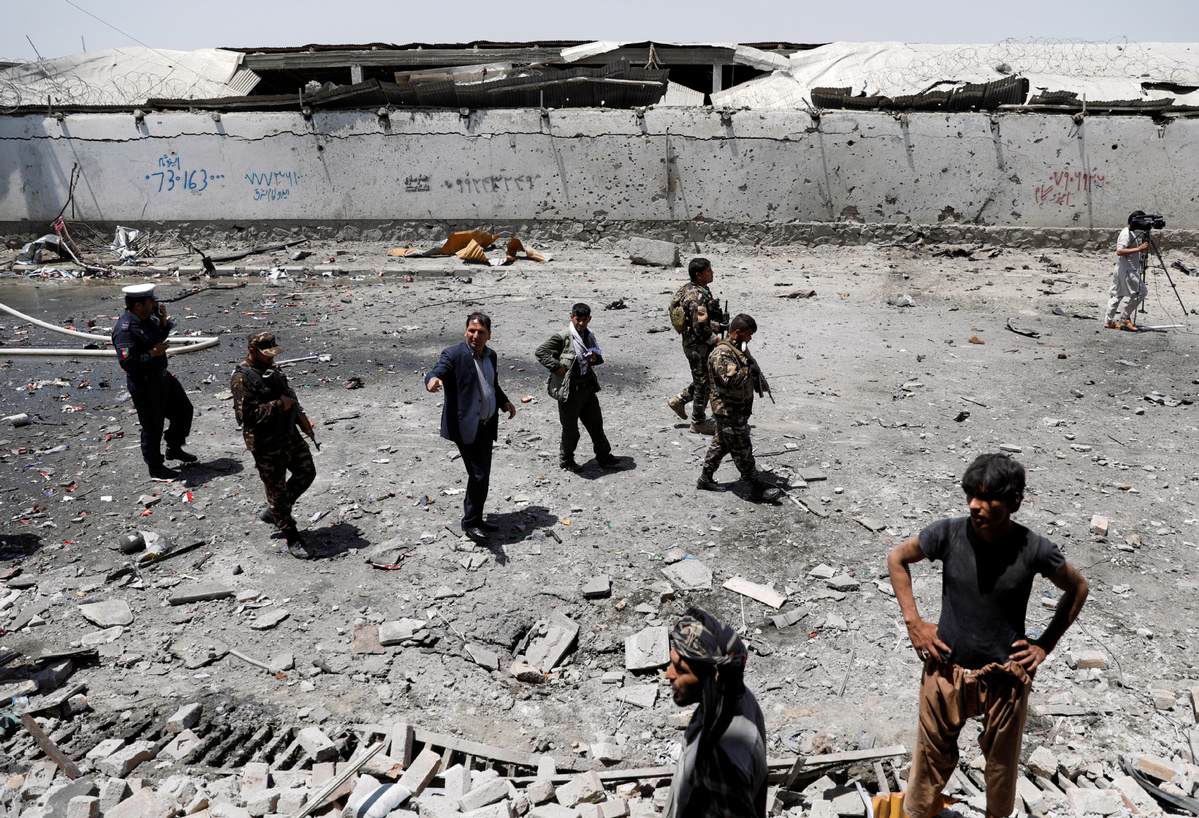Cease-fire needed so Afghanistan can achieve lasting peace
By Syeda Dhanak Fatima Hashmi | China Daily Global | Updated: 2019-07-26 09:18

International efforts for peace in Afghanistan are being rewarded.
In Doha, the capital of Qatar, unprecedented meetings co-hosted by German and Qatari officials this month brought together diverse factions of Afghanistan and envoys from the United States. Sixteen Taliban individuals, albeit present in their own capacity, and 60 Afghans-delegates from political parties, government officials and representatives of civil society organizations-engaged in discussions that led to a potentially positive arrangement.
The meetings have raised hopes for peace. Both sides agreed to reducing violence by withholding attacks on religious centers, educational centers, hospitals, commercial markets and dams.
Since the Islamic Emirate of Afghanistan of the 1990s was felled by forces led by the United States for sheltering al-Qaida terrorists, the Taliban has repeatedly refused to negotiate with the West-backed government. Its shift in strategy is conducive for peace, though it remains to be seen how a cease-fire can be achieved that will pave the way for a lasting peace in the country.
The Taliban, eager to build a positive image, is reported to be willing to agree to some sort of ceasefire, as it said it also feels guilty of killing civilians who are fellow Afghans. However, it also claimed it might not have an alternative strategy.
The role of Pakistan and China cannot be ignored in this regard. Pakistan has played a key role in aiding the Afghan peace process and the US-Taliban talks. These have reportedly made promising progress over the past few months.
On the other hand, China has been considered important by nations that have pursued efforts to engage the Afghan government and the Taliban in peace talks. First, China joined others to initiate support for the Taliban-US peace talks, an intra-Afghan dialogue and the fight against terrorism in Afghanistan.
Next, China worked with Pakistan for their stated goal of bringing the Afghan conflict to an end through peace talks involving all major stakeholders, including the US, the Afghan government and the Taliban.
As members of a quadrilateral coordination group that also included Afghanistan and the US, Pakistan and China have backed every Afghan peace initiative, including talks in Doha and intra-Afghan meetings in Moscow.
The peace talks gained huge success for Afghan women and young people.
Women's rights and freedom are among issues at the top of the agenda in talks. Judging from the long history of Afghan women as victims of ignorance and extremism, it was a momentous development as the Taliban leadership met with the female representatives, including one of their leading critics, Fawzia Koofi, a former member of the lower house of the Afghan Parliament.
The inclusion of Afghan women in the peace talks indicated a remarkable shift in the Taliban's perspective toward women, though the Taliban insisted that women's rights be protected within an Islamic framework.
Following the downfall of the Taliban's regime, Afghan women have participated in social, political and cultural activities and played a highly significant role.
Schools and universities employ more than 68,000 female instructors, including 800 university professors in private and public institutions. More than 6,000 women serve as judges, prosecutors, defense attorneys, and police and army personnel. Afghanistan government data counts about 10,000 women among the country's doctors, nurses and health professionals, and some 1,150 entrepreneurs.
However, the Taliban will not easily abandon its goal of establishing an Islamic Emirate, despite continued diplomatic efforts. In the event of a cease-fire, it may function as a political party that might hold major offices in the Afghan government.
Yet, through the talks, the Taliban and Afghan representatives aim to present a satisfactory example of a way in which they could express their thoughts patiently and in a friendly manner. But the path toward sustainable peace can be laid only when a cease-fire is agreed to and adhered to by all parties.
The author is a social scientist, research scholar and public policy analyst. The views do not necessarily reflect those of China Daily.
























